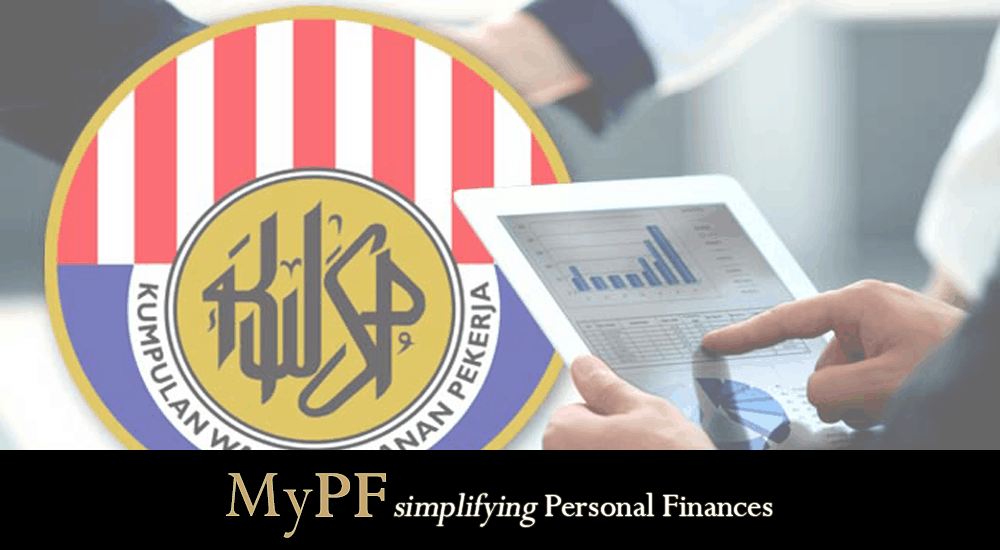Should I make voluntary EPF contributions? Does it matter if I am employed, self-employed, or looking to work overseas in the future? Can I make voluntary EPF contribution for my immediate family member?
Updated: Aug 13, 2020

Contents
What is a Voluntary EPF Contribution
1. EPF Voluntary Contribution
- Persons who are given the option to contribute voluntarily: Owners of a sole proprietorship, self-employed persons, business partners and retired workers
- Any person who is:
- not an employer as defined in the EPF Act 1991; or
- not an employee as defined in the EPF Act 1991; or
- neither an employer nor an employee as per their definitions under the EPF Act 1991, and where both agree to contribute
2. EPF Voluntary Excess
You are employed with your employee contributing to EPF, and you/your employee/both wish to contribute more than the current amount.
EPF Voluntary Contribution Benefits
For self-employed:
- There may be government incentives to contribute to EPF (i.e. 10% government matching for up to RM1,200 contribution to SP1M).
- You want to maximize the RM6,000 EPF/life insurance tax relief.
- You may apply for loans (i.e. home loan) in the future and require historical records of monthly EPF payments for ease of loan application and approval in the future.
For employees:
- Your employer may give higher employee benefits above the minimum 13% employer contribution (typically up to a maximum of 19% for most employers).
- You have excess funds every month that you would like to regularly save for retirement with historical returns higher than current FD rates.
Overall: Making contributions to EPF will reduce your available cashflow as your funds are tied in until you are age 55 in most cases, especially for other investment options with higher than EPF returns. However, the pros outlined above may outweigh the cons, depending on your scenario.
How to make a Voluntary Contribution
- You must be a Malaysian with EPF account (expats/foreign workers not applicable).
- If you are self-employed/retired: the monthly contribution is any amount up to max RM5,000 through your EPF account or through EPF SP1M. You can change the contribution amount at any time without prior notice.
- If you are an employee, you or your employer can increase your EPF contribution by contacting EPF and submitting KWSP 17 (Maj) while the employee needs to complete Form KWSP 17A (AHL). This change is permanent until you submit a new contribution change instruction.
Types of Voluntary Contribution
- Self Contribution: for your own EPF
- i-Saraan: for freelancers/self-employed
- i-Suri: for homemakers registered in government eKasih database below the Poverty Line Income
- Top-up Savings Contribution: for your parent/child’s EPF below age 55
Payment Methods
Payments must be made to: KUMPULAN WANG SIMPANAN PEKERJA
- Internet (online banking): Maybank, Public Bank, CIMB, Kuwait Finance House, RHB Bank, Bank Mualamat
- Bank Agent Counters (cash/cheque): BSN, Maybank, Public Bank, RHB Bank
- EPF Counters: cash (up to RM500) / cheque
Note: If issuing cheque/money order/bank draft, EPF member number and month of contribution must be recorded at back
Payment Limit
- The minimum contribution payment amount is any amount in RM (previously used to be minimum RM50); AND
- Maximum of RM60,000 yearly (effective January 2013).
FAQ
- Q: How do I change my EPF contribution from employed to self-employed?
A: You will need to go to the nearest EPF branch. You will need to fill up KWSP6(1) form downloadable from EPF’s website or available at EPF.
Note: There is a separate form for SP1M account opening. - Q: How do EPF contributions affect my loans/borrowing ability?
A: This is a tricky subject as different banks have different requirements for loans which may change over time. Banks are basically looking at stability of income to determine whether a loan is approved. If you are self-employed/retired, having historical EPF records with regular EPF deductions for the past 1 – 2 years helps. (Other relevant records include your tax payments, fixed deposits available, credit card/loan repayment history). Another option if you are self-employed/retired is to form a company and pay yourself a fixed income (i.e. RM5,000 monthly) with EPF deductions.



Hi. I wish to clarify this matter…
Can a civil servant in the pension scheme, while still working (not yet retired), do self-contribution to EPF? And will he/she be eligible for tax relief under the Life insurance + EPF relief (RM6000)? I am perticularly interested in the assessment year 2016 & 2017….
Lastly, any recent updates on that tax relief?
Thanks!
Tax relief updates: https://mypf.my/2018/11/02/malaysia-budget-2019/
For Tax Relief for Year Of Assessment 2019 (Tax Filed In 2020), it now divided the pensionable public servants with non-public servants as below.
For pensionable public servants: up to RM7,000 life insurance
For non-public servants: up to RM3,000 for life insurance and up to RM4,000 for EPF
Would a civil servant chooses the pension scheme and make self-contribution to EPF still be eligible for tax relief under life insurance (RM3,000) and EPF (RM4,000)? Thanks
I am currently an employee and making monthly contribution as per the law. Can I still make an additional contribution under self contribution to EPF.
If yes, what’s the procedure? Thank you.
https://www.kwsp.gov.my/member/contribution/contributing-more-than-the-statutory-rate
Can I make self contribution to my children epf account? If can, how to go about it?
Can I know where does my additional voluntary contribution? Does it go to Account 1 or 2?
Hi there, I can’t find anywhere from the Acts or amendments that says maximum employer contribution is 19%. Perhaps I’m overlooking something.. can you point me to the right resource please? Thanks!
the 19% I think is in the Income Tax Act 1967
For employee, mandatory is 11% contribution. Understand we can chose to contribute more by submitting KWSP 17A (AHL). Is there a maximum % that a employee can contribute
?
https://www.kwsp.gov.my/member/contribution/contributing-more-than-the-statutory-rate
Hi, i am a freelancer. I would like to check that if i want to do EPF self contribution, do I need pay income tax after that?
Hi, I would like to ask
1. Does the amount of EPF Self Contribution directly correlate to our Income as a freelancer?
2. Can I contribute the past few months of EPF now? or I only can contribute the current month of submission?
Thank you.
Hi, Im a sole proprietor. What I need to do if I want epf self contribution? Do I need to inform KWSP ? Btw, I’m kwsp member and I do have member number.
https://mypf.my/investing/retire/sp1m/
Hi, I’m a sole proprietor. I have existing EPF account and been self-contributing for the past 3 years ( I was an employee before this). However I have been told that my self-contribution is not eligible for income tax relief, is that true? If it is true, would opening i-saraan account would eligible me for tax relief on EPF contribution?
Hi, in order to qualify for tax relief, can a 75 year-old partner in partnership business opt to
1) self contribution:
2) contribute EPF as an employee at standard or higher contribution rate
3) increase the employer contribution rate,
Any restriction for the above partner to perform EPF withdrawal? Can he performs withdrawal the next year after contribution ?
Hi I am Sole Proprietor and I have existing EPF account ( I was an employee before this). If I perform self contribution into my existing EPF account, is this eligible for tax relief ?
Thanks.
Hi, if an employee above 75 wishes to make EPF contribution, eventhough they are not statutorily required to do so, claim tax relief? If yes, will it only be for the RM4,000 EPF portion and not the life insurance RM3,000 portion?
Can employers who choose to contribute EPF to employees who are above 75, also claim for tax relief as part of that 19% given to them to claim for overall EPF?
What about PRS in the above 2 scenarios?
Hi I’d like to know if I want to do self contribution to my existing Epf account do I transfer directly online or do I need to visit a Epf branch to fill up any form?
Hi can my daughter working in Singapore make Epf contribution here monthly.
Hi I am self-employed. I know that we can claim tax relief for our employee EPF contribution but my question is can the sole proprietor company deduct the employer EPF contribution portion (ie 13%) from its profit? Thank you
Hi I am partner. I have partner salary and deduct EPF .( employee RM 3120, employer RM 2640 ) i can claim tax relief for EPF contribution ? if yes, will it only be for the RM4,000 EPF portion ?
Self voluntary contribution EPF can claim tax relief? Not under I-Saraan
Hi, I’m freelancer. Do I need to fill up any form before pay the self contribution (below 55yrs old)? For employed, tax relief for EPF (max RM4k) is Employee portion only, how about self contribution? Which portion to calculate the RM4k?